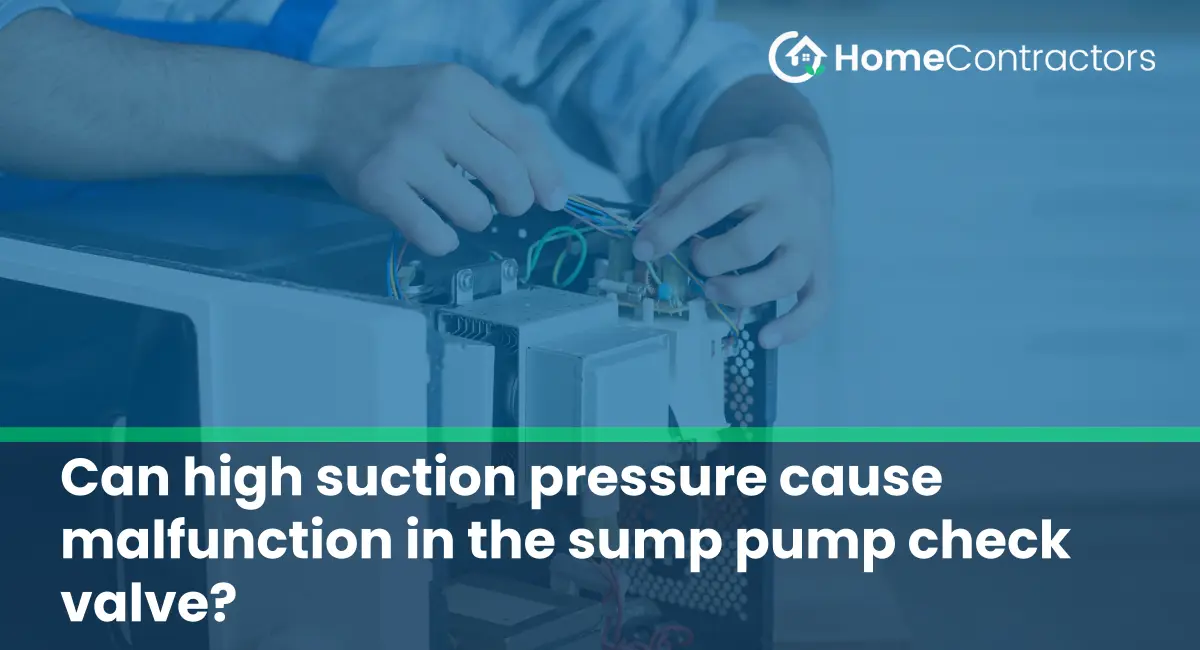Introduction:
A sump pump is an essential component of any home’s basement waterproofing system, responsible for preventing flooding and water damage. One critical element of a sump pump setup is the check valve, which allows water to flow out of the sump pump discharge pipe while preventing it from flowing back into the sump pit. However, certain factors, such as high suction pressure, can lead to malfunctioning check valves, potentially undermining the overall functionality of the sump pump system. In this article, we will delve into the details of how high suction pressure can cause check valve issues and explore potential solutions to address this problem effectively.
Understanding Suction Pressure and Check Valves:
Before delving into the specific impact of high suction pressure on sump pump check valves, it is necessary to gain a clear understanding of suction pressure and the purpose of check valves. Suction pressure refers to the vacuum or negative pressure created by the sump pump in order to draw water into the pump chamber. On the other hand, check valves are designed to allow one-way flow of water out of the sump pump discharge pipe. When operating correctly, they prevent water from flowing back into the sump pit when the pump turns off.
The Impact of High Suction Pressure:
Although sump pumps are generally designed to handle high suction pressures, extreme conditions can sometimes cause check valves to malfunction. Here’s how high suction pressure can affect the operation of the check valve:
1. Valve Flapper Jamming:
In cases of high suction pressure, there is a risk that the valve’s flapper may get jammed or stuck in the closed position. This can prevent water from flowing out of the discharge pipe, hindering the sump pump’s ability to effectively remove water from the sump pit.
2. Valve Spring Damage:
Another issue that high suction pressure can cause is damage to the valve’s internal components, particularly the spring mechanism responsible for opening and closing the valve. Excessive pressure can weaken or deform the spring, rendering it ineffective in maintaining a proper seal when the pump is turned off. This can lead to water flowing back into the sump pit, defeating the purpose of the check valve.
3. Increased Strain on Pump:
High suction pressure puts additional strain on the sump pump itself, forcing it to work harder to draw water into the pump chamber. This increased workload can potentially contribute to premature pump failure, further exacerbating the overall functionality of the sump pump system.
Preventing Check Valve Malfunction:
1. Regular Maintenance:
Performing routine maintenance on both the sump pump and the check valve is essential. This includes cleaning and inspecting the valve periodically, ensuring no debris or obstructions are present that could hinder proper functioning. Regular maintenance can also help identify potential issues before they develop into significant problems.
2. Selecting the Right Check Valve:
When installing or replacing a sump pump check valve, it is crucial to choose one that is specifically designed to handle high suction pressures. Look for models that provide a higher PSI (pound per square inch) rating to ensure longevity and reliability, even in demanding conditions.
3. Pressure Relief Valve Installation:
In extreme cases where high suction pressure is a recurring issue, installing a pressure relief valve can help alleviate the strain on the check valve and the sump pump. This valve is designed to release excess pressure, preventing damage to the system’s components.
High suction pressure can indeed cause malfunction in the sump pump check valve, jeopardizing the overall functionality of the basement waterproofing system. Understanding the potential issues and implementing appropriate preventative measures, such as regular maintenance, selecting the right check valve, and installing pressure relief valves, can significantly mitigate the risk of check valve malfunction. By ensuring a well-maintained and properly functioning check valve, homeowners can maximize the effectiveness of their sump pump systems in protecting their basements from flooding and water damage.
